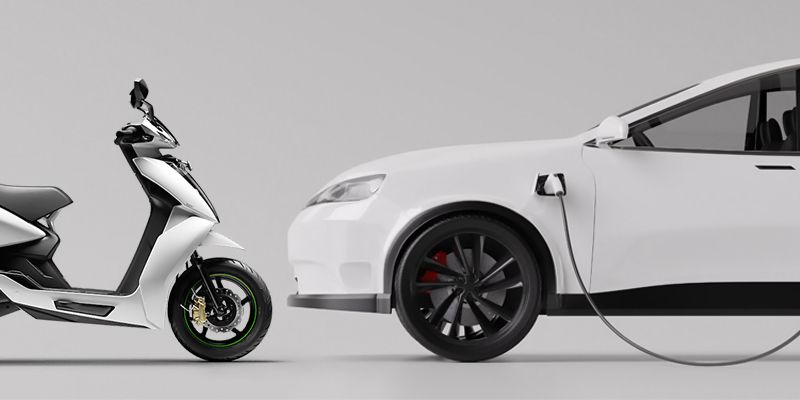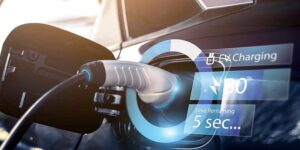Electric Vehicles (EVs) are becoming a significant part of India’s shift towards sustainability and green energy. This upward trend is not just a result of technological advancements, but is majorly influenced by government policies and incentives. These initiatives have a crucial contribution towards consumer satisfaction with EVs.
Government policies
The most influential government policy has been the Faster Adoption and Manufacturing of Hybrid and Electric Vehicles (FAME) India Scheme, 2015. It provided consumers with different financial subsidies and incentives to minimise the cost of electric vehicles simultaneously, increasing accessibility.
The second phase, FAME II 2019, with a budget of Rs 10,000 crore, aided in the purchase of eBuses and eCarriers. This policy directly increases consumer satisfaction by lowering the upfront vehicular costs.
The Centre’s Production Linked Incentive (PLI) Scheme for Advanced Chemistry Cell (ACC) Battery Storage, 2021 assisted manufacturers by providing tax benefits on crucial elements used in battery production such as Lithium-ion.
The government is also targeting to decrease import dependency and fortify the supply chain by boosting local production. This policy not only lowers the cost of EVs, but secures essential components, addresses long-term maintenance concerns, and boosts consumer confidence.
Battery swapping and charging
Battery life and charging infrastructure are the two primary concerns for modern EV users. The government’s battery swapping policy has become the official solution as it promotes universal battery-swapping, especially for commercial vehicles like taxis and delivery automobiles. This results in downtime reduction and enhances EV owner’s convenience. Further, charging station expansion helps alleviate range anxiety.
Strengthening EV servicing capabilities
A crucial factor in EV consumer satisfaction is the availability of reliable and efficient servicing options. Unlike traditional vehicles, EVs require specialised maintenance, particularly for battery systems and electric drivetrains. The government, recognising this need, has been working alongside industry stakeholders to encourage the development of EV-specific service networks.
Initiatives like the National Skill Development Corporation (NSDC) are helping train technicians to handle the unique challenges of electric vehicle maintenance. As the EV market grows, this push for upskilled labor ensures that consumers can access qualified service centers, addressing one of the primary concerns around EV ownership—reliable after-sales service. This approach helps build trust in the overall EV ecosystem, further enhancing consumer satisfaction.
This focuses on government efforts regarding workforce development without suggesting unsupported incentives for service centers.
Economic incentives
The government has also introduced several tax benefits and exemptions to lower the overall EV costs. This includes reducing customs duties on critical components like nickel, cobalt, and lithium, essential for battery production. These tax incentives and reduced Goods-Service Tax on EVs and income tax deductions on loans for EV purchases, make EVs more financially appealing. By lowering the cost of ownership, these incentives significantly enhance consumer satisfaction.
Role of state governments in expanding EV accessibility
In addition to central government policies, several state governments in India are playing an active role in boosting EV consumer satisfaction by creating state-specific policies that complement national initiatives.
States like Delhi, Maharashtra, and Karnataka have introduced their own EV policies to promote the adoption and usage of electric vehicles at a local level. These policies include state-level subsidies, rebates on road taxes, and even exemptions from registration fees for EVs, further reducing the cost of ownership for consumers.
Moreover, state governments are taking the lead in expanding EV infrastructure, such as setting up public charging stations in urban areas and along highways. This localised effort not only alleviates range anxiety but also provides consumers with a seamless driving experience, increasing their confidence in making the switch to electric vehicles.
The involvement of state governments in enhancing charging infrastructure and offering additional financial benefits ensures that the push towards EVs is a coordinated, multi-level effort. These measures further add to the consumer satisfaction equation by improving accessibility and addressing practical concerns at the regional level.
Cultural and behavioral shifts
Government policies are currently shaping consumer attitudes towards EVs. Initiatives that promote environmentally sustainable means resonate with an increasingly eco-conscious population. As consumers become aware of the positive environmental impact of EVs, their satisfaction with these vehicles increases.
Conclusion
In summary, government policies and incentives are essential factors contributing to EV consumer satisfaction in India. By bypassing financial, practical, and cultural barriers, these initiatives not only encourage a switch to EVs but also ensure customers are satisfied with their choices. As India treads further on the sustainable path, government policies will continue to be a deciding factor in driving the widespread adoption of electric vehicles.
(Disclaimer: The views and opinions expressed in this article are those of the author and do not necessarily reflect the views of YourStory.)





![Read more about the article [Funding alert] Zoho invests $5M in deeptech startup Voxelgrids](https://blog.digitalsevaa.com/wp-content/uploads/2021/09/SridharVembu-1592832316774-300x150.jpg)
![Read more about the article [Funding roundup] Surat-based Bebe Burp, EVIFY raise early stage rounds](https://blog.digitalsevaa.com/wp-content/uploads/2022/01/angel-lead-1641123615707-300x157.png)



